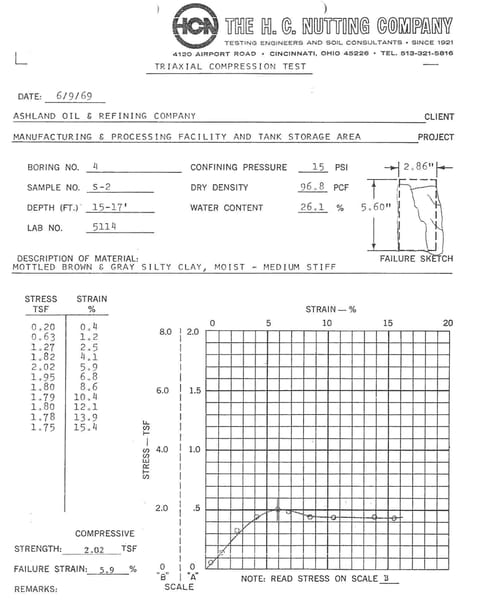Stumbling Down Memory Lane


There are no new refineries. Not in the continental US, anyway. So when you get a project in a refinery, it means you’ll be standing in the shadow of the Masters, the guys who figured consolidation rates with log paper and a sliderule. An observant engineer can learn a lot.
I told the plant engineer where I needed data, knowing that they would have borings right where I needed them. It’s a refinery. All refineries have a plethora of borings. Not knowing who would be combing through the dusty tomes I described all the best features of the classic old reports. Thick. It’s gotta be thick. And comb-bound with craft paper covers, ideally with a cut-out window.Maybe onionskin paper but likely not, as you didn’t send opnionskins to the customer, but rather kept them for your own files. At the Port of Oakland one time I saw a multi-volume report bound with twine. Possibly that would be too much to hope for.
And of course they had exactly the report that we needed, and it looked exactly like I expected (though not bound with twine). I could smell the dusty pages even though I was scanning through a PDF. The report was not particularly old, not truly “golden age” vintage, because we are working in Unit 2. The classic site characterization would have been done for Unit one probably right after WWII. Even still, the late 1960’s were a great time to be a foundation engineer, lots of borings but modern samplers, still lots of budget for laboratory tests including time-rate consols. And the report, as you would expect, is a treasure trove of solid information that was useful then and is just as useful now. It also has the quirky old stuff that you just don’t see anymore. Hand-drafted figures showing settlement rate predictions. Sketches showing the failure mode of triaxial tests. Consolidation tests plotted using void ratio instead of strain. Good times.
I wasn’t familiar with the company that wrote the report, and I was curious to learn more. They’re named after an individual, the same as all the great firms from that era, and they proclaim their founding date right in their logo. Tragically, the briefest research revealed that they had been gobbled up like most of the grand old consultancies. They gave up their brand in 2011, having done business for 90 consecutive years under the founder’s name. The shop only existed for me, though, for less than an hour. I didn’t know of them at all (though I knew their type), then I learned of them and admired their work, and then I learned that they had been agglomerated by one of the big generic testing companies that, honestly, makes a lot of good work for us here at Atlas.
It’s inspiring at the same time as it’s disappointing, appreciating their contribution to the practice of foundation engineering even after the company has run it’s course. As I do my little project in the refinery, enjoying the view from the shoulders of an extinct giant of a firm, it’s important to remember that some day my small contribution may be passed on to the next engineers working on the next refinery improvement project. In 50 years their report aged from cutting edge to quaint without losing any of its usefulness. Our reports may likely be the only tangible reminder that we were careful and innovative and did good work, and we should bear that in mind as we write and deliver our reports.


Doug founded Atlas Geotechnical in 2004, and focuses on working for Contractors and Operators, tackling the most challenging problems.